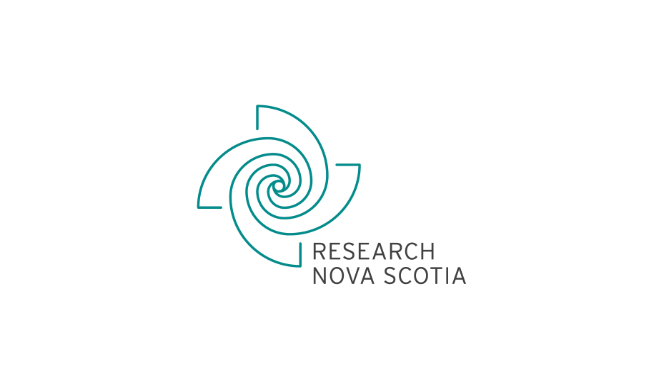Policy foresight: a valuable tool in an era of rapid technological change
 By George Poulakidas
By George Poulakidas
George Poulakidas is Genomics and Society advisor at Genome British Columbia
Policy and decision makers face a growing challenge: keeping up with the ever-increasing complexity and rapid pace of development in cutting-edge technologies. The speed of innovation, combined with so many variables and often competing priorities, makes it difficult to plan for the future.
Facilitating the development of new tools, and the uptake of existing ones, often requires a variety of policies. It can be a cumbersome and complicated process fraught with risks and uncertainty.
The field of genomics, the study of the complete set of DNA in an organism, is a prime example of a sector that has evolved through massive change.
The flagship project in the field of genomics, one often used to mark the beginning of a new era, was the Human Genome Project. This was a large international effort to identify, map and sequence all of the genes in the human genome. It lasted from 1990 to 2003 and cost about $2.7 billion (an estimated $5 billion today). Today, sequencing a human genome takes less than a day and technologies such as artificial intelligence help us analyze the data much faster.
During the years of the Human Genome Project, experts from around the world had ample time to think and debate about the appropriate responses to the ethical, policy and regulatory challenges of the project. Questions of data sharing, ownership, and patentability were meticulously considered.
Today, the ever-accelerating pace of technological advancement limits the room for such deliberation. Genomics now offers exciting tools with applications across various sectors like human health, environment and agriculture. These tools provide valuable insights and are being used to unlock new solutions to societal challenges.
But policymakers face immense pressure to make crucial decisions while technologies are still rapidly evolving. This begs the question: How can we expect governments and other decision makers to be adequately informed and make well-considered policy decisions?
To bridge the gap between rapid technological change and effective policymaking, a powerful tool called “policy foresight” offers a useful alternative. Already being used by many governments and organizations, policy foresight brings diverse groups of people together for facilitated workshops where they can explore the future opportunities and challenges.
Imagine a session where participants discuss emerging trends, potential challenges and corresponding courses of action. These discussions consider the near, medium and long-term implications of various decisions. This information is synthesized, ultimately informing a “decision tree” that can guide policymakers.
A key strength of policy foresight lies in its inclusive nature. Participants can be of any background and possess varying levels of knowledge about the matter at hand. Having a mix of people is an important part of the process, as subject-matter experts offer a deeper understanding of the issue, but those less familiar with the subject can contribute fresh perspectives and “out-of-the-box” ideas, free from pre-existing biases.
Governments and organizations in the public and private sectors in Canada have started taking foresight more seriously. Policy Horizons Canada is the Government of Canada’s centre of excellence in foresight, assisting the federal government with decisions about the future.
Other organizations that interact with governments and industry have their own foresight programs, such as CIFAR and the DIGITAL global innovation cluster.
Genome British Columbia’s foresight workshops
The organization where I work, Genome British Columbia, has funded genomics projects across the innovation spectrum (from basic research to commercialization and uptake) and across industries (from human health to agrifood and natural resources) for 25 years.
In order to assist policy and decision-makers, we held two foresight workshops in fall 2023 on four topics: genetic counsellors; controlled environment agriculture; environmental DNA; and Indigenous data sovereignty.
These sessions fulfilled the policy foresight element of diverse audiences. The first workshop involved our own staff, experts in genomics research. The second workshop, held at the Canadian Science Policy Conference in Ottawa, brought together policymakers and social scientists with limited genomics knowledge.
While the detailed findings are beyond the scope of this article, it’s important to note the workshops generated a rich mix of responses – from highly technical insights to innovative, untraditional ideas.
Following the foresight workshops, Genome BC held a symposium in March 2024 in Victoria, B.C., where panels discussed three of the four workshop topics (genetic counsellors, controlled environment agriculture, and environmental DNA). Similar to the workshops, the symposium included people from various backgrounds (social sciences, industry, not-for-profit, government) to foster cross-sectoral learning and collaboration.
For example, a senior government official shared that they learned a lot from discussions of genomics in the environment sector, as their work focuses exclusively on human health. Similarly, people from the field of environmental DNA saw potential parallels between their field and approaches used in human health.
This cross-pollination of ideas is crucial because, traditionally, these diverse audiences rarely interact. Professionals in human health, agrifood, and environment wouldn’t typically attend panels on technologies being used in a sector seemingly unrelated to theirs.
The rapid pace of technological change makes it difficult, if not impossible, for a policy or decision-maker to stay up to date and anticipate future developments. At the same time, as technologies converge (for example, using artificial intelligence to process genomic results) anticipating policy and regulatory needs becomes even more complex.
Organizations at the forefront of research and development are uniquely positioned to bridge this gap. They can assist government, industry leaders and academics by anticipating the needs and implications associated with these technologies, while fostering collaboration among diverse experts and audiences.
As these cutting-edge technologies mature and spin-off more innovative products and services, proactive planning is crucial to maximizing the benefits of these emerging technologies while mitigating potential risks. Doing so in a responsible manner requires anticipating their broader societal implications.
Policy- and decision-makers must be open to embracing new and potentially uncomfortable approaches like policy foresight to help achieve this goal. Partnering with organizations that are experts in their fields to run such workshops can increase the capacity of governments to anticipate future developments and ultimately result in better decision making.
R$
Events For Leaders in
Science, Tech, Innovation, and Policy
Discuss and learn from those in the know at our virtual and in-person events.
See Upcoming Events
You have 1 free article remaining.
Don't miss out - start your free trial today.
Start your FREE trial Already a member? Log in
By using this website, you agree to our use of cookies. We use cookies to provide you with a great experience and to help our website run effectively in accordance with our Privacy Policy and Terms of Service.




.png)
